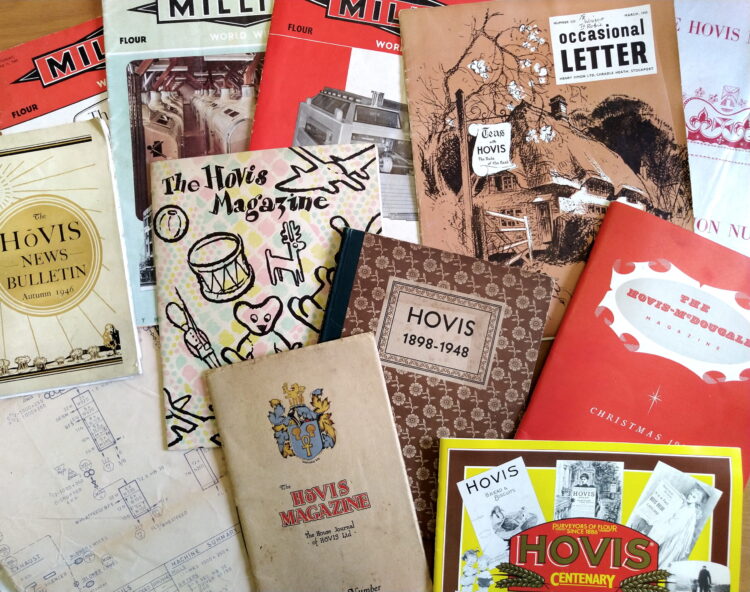
| At the Mills Archive we have a wide range of interests covering a variety of subjects connected to mills and milling. Much of our collections relates to traditional wind and water powered mills and these have often been featured in this newsletter. However, we are equally interested in capturing the more recent history of flour milling, beginning with the roller milling revolution which took place in the late 19th century and continuing all the way to the large high-tech flour mills of today. Over the years we have been given a number of archival collections on this theme. Here are a couple of more recent donations: | |
The Robert Morton Collection
| Robert Morton donated a collection of items relating to his family, particularly to the career of his great uncle John Figgins Morton, managing director of Hovis. | |
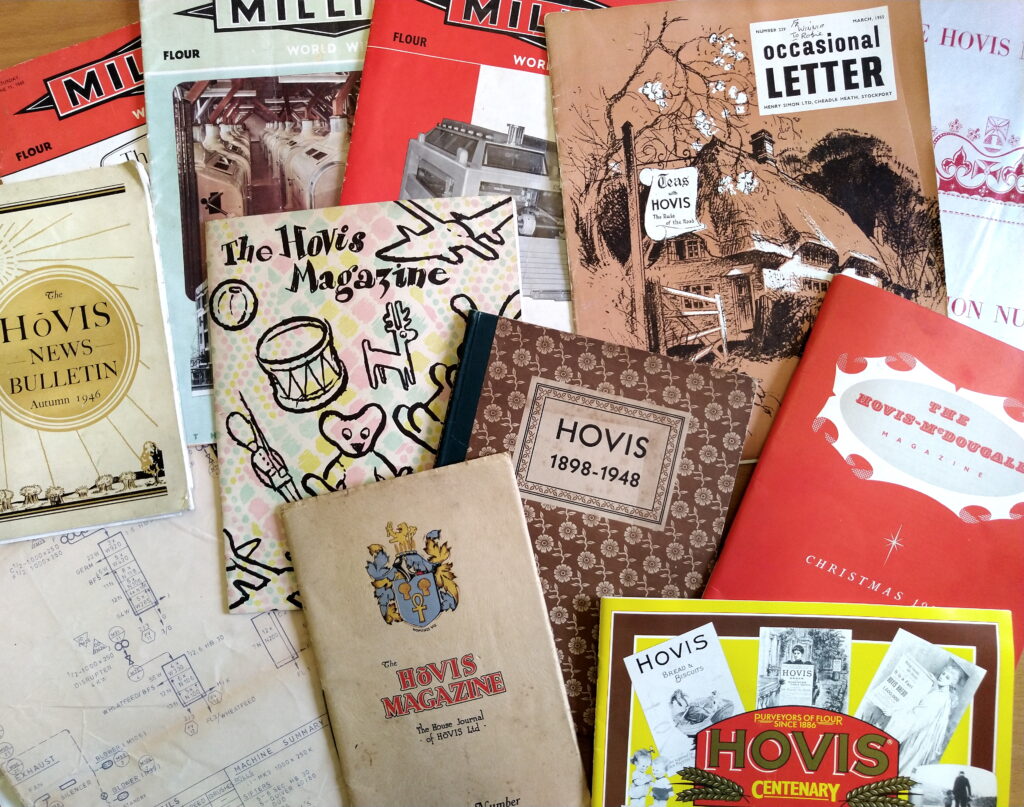
| The collection includes copies of news bulletins and magazines produced by Hovis for their staff, along with some other items relating to the Morton family. The April 1939 issue of the “Hovis Magazine” contains a special article on the jubilee celebrations for John Figgins Morton, including the text of his speech in which he outlines his history with the firm: It was in 1887, the year of Queen Victoria’s Jubilee, that “Germ Bread”, as it was called, was first advertised on the hoardings, and two years later, at the age of 17, I was appointed to take charge of the Germ Office in the firm of S. Fitton & Son, Flour Millers… | |
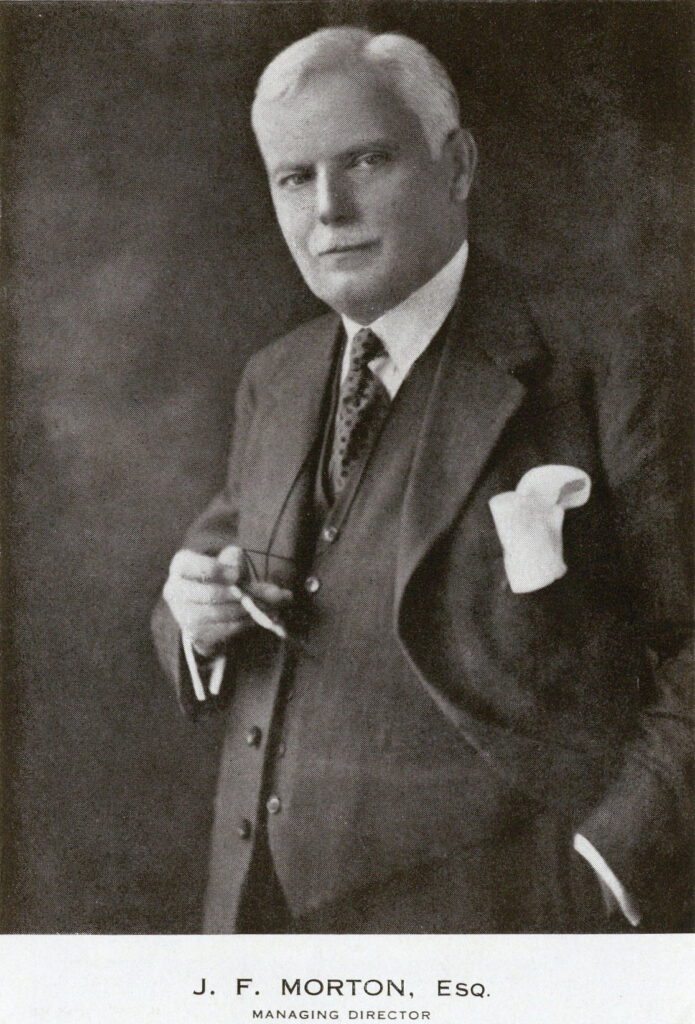
| Conditions today, of course, are very different, both as regards personnel, hours of work, and amenities … Two shifts were run, and the mill worked 130 to 140 hours a week. 18/- a week was considered good wages for 68 hours, either by labourers or carters. There were 3 days holiday a year, Christmas Day, Good Friday and Barnaby Monday – if Christmas Day fell on a Sunday then there were two. The first year I was with the firm I asked for a week’s holiday and got it, others followed suit and from then annual holidays for the staff became general, but it was not until after the Great War that mill workers received holidays with pay… Originally you will understand that Macclesfield Mill was a mill for the milling of white flour by S Fitton & Son. Mr Smith had been a miller in the Potteries but had failed in business, so he invited Fitton to take up the manufacture of Germ Flour, and much against the advice of his friends, Mr Fitton consented. | |
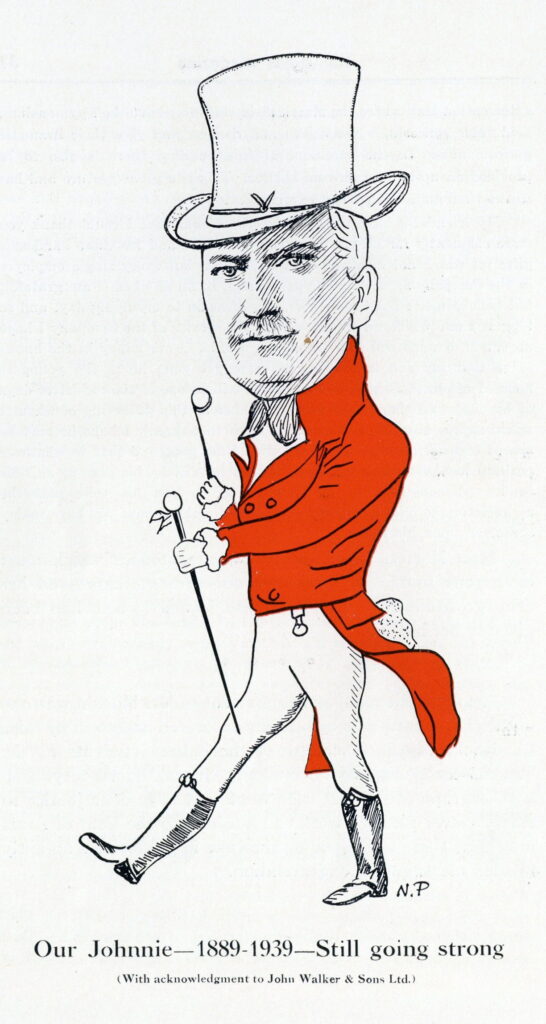
Very shortly, however, it was realised that the name “Germ Bread” was not suitable; it was a dictionary word and could not be registered, anyone else could use it, and “germs” are not always associated with pleasant things so it was decided to change the name and to advertise a prize of £25 to the one selected. Many thousands of suggestions were made but after much consideration “Hovis” was selected (incidentally “Yum-Yum” ran it pretty close). “Hovis”, as is generally known, is taken from two Latin words, “hominis vis,” meaning “strength of man.”
Cartoon of J F Morton
| The magazine also gives a fascinating insight into the lives of Hovis employees, with reports detailing the social activities in each of the Hovis mills – including sports such as bowls and football, whist drives, amateur plays, the Children’s Xmas Party and events put on by the Hovis Literary and Debating Society (such as a debate on the statement “that the Cinema is a curse rather than a blessing to Humanity” – heavily defeated!). | |
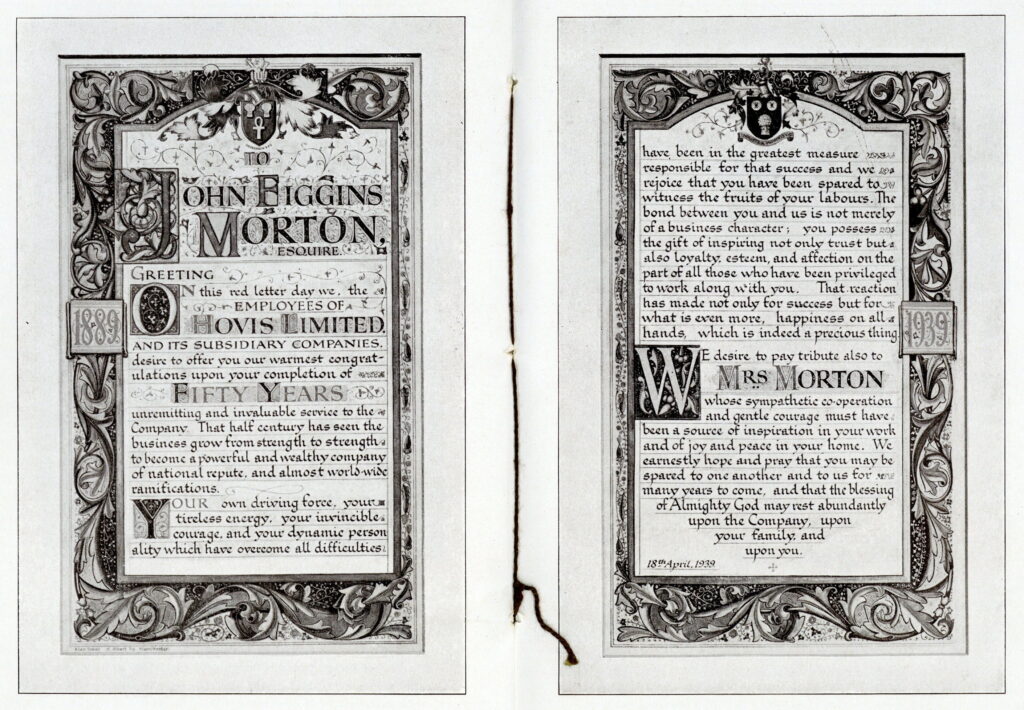
| But alongside all the merriment the April 1939 magazine gives numerous hints of the looming possibility of war. J F Morton in his speech, while thanking the Board for “their undertaking to erect in Macclesfield in honour of my Jubilee a Recreation Hall where the Macclesfield staff may have their gymnasium, hold their concerts, whist drives and dances, and give their dramatic performances,” also states that “in the basement of this building there is also to be provided an up-to-date air-raid shelter.” It seems the possibility of air raids was on everyone’s mind. The editorial states that “It is now incumbent on all Factory owners to undertake certain measures of ARP [Air Raid Precautions] defence for their own works and workpeople. Efficient steps are already being taken at all our branches to see that a suitable proportion of the employees are trained and equipped for fire-fighting, first aid and anti-gas measures.” The report later in the issue from the Haverhill mill is upbeat: |
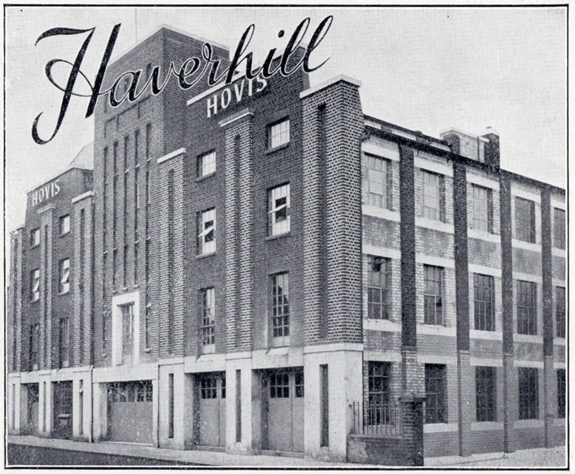
| A R P is being taken up very seriously here and it is as it should be, because it is far better to know how to do something when the time comes for it to be done than to have no knowledge at all. Why, if blooming old ‘itler could only see how efficient us Hovis blokes are, not only in providing the means for making the best bread (an Army marches on its stomach), but also in providing the means to counteract any little damage he might be inclined to do to try and upset the flow of the National favourite, why, he would go on his bally knees and implore to be allowed to become a member of Hovis Ltd. A more wistful tone is struck in the report from Sible Hedingham – an old country watermill built 1848, and one of Hovis’ smallest mills: |
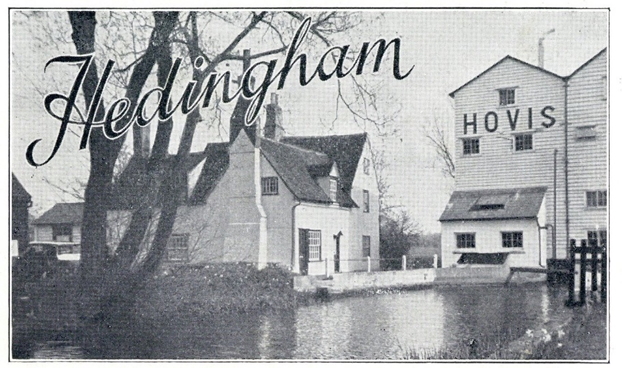
| The surround of this mill is now a picture with daffodils, primroses, etc. in full bloom, the crocuses also made a fine show earlier. Nature has again beautified the countryside and Spring is in the air, and in such surroundings one wonders why such peace cannot prevail throughout the world. In fact, the London and Manchester mills were to be destroyed by bombs, and the mill in Bristol was damaged. You can see more about the collection in our catalogue: https://catalogue.millsarchive.org/items-re-hovis-and-j-f-morton. |
Robert Allan Forrest donation
| Earlier this year we received several battered old suitcases tied up with string. These contained books and documents donated by the widow of Robert Allan Forrest. |

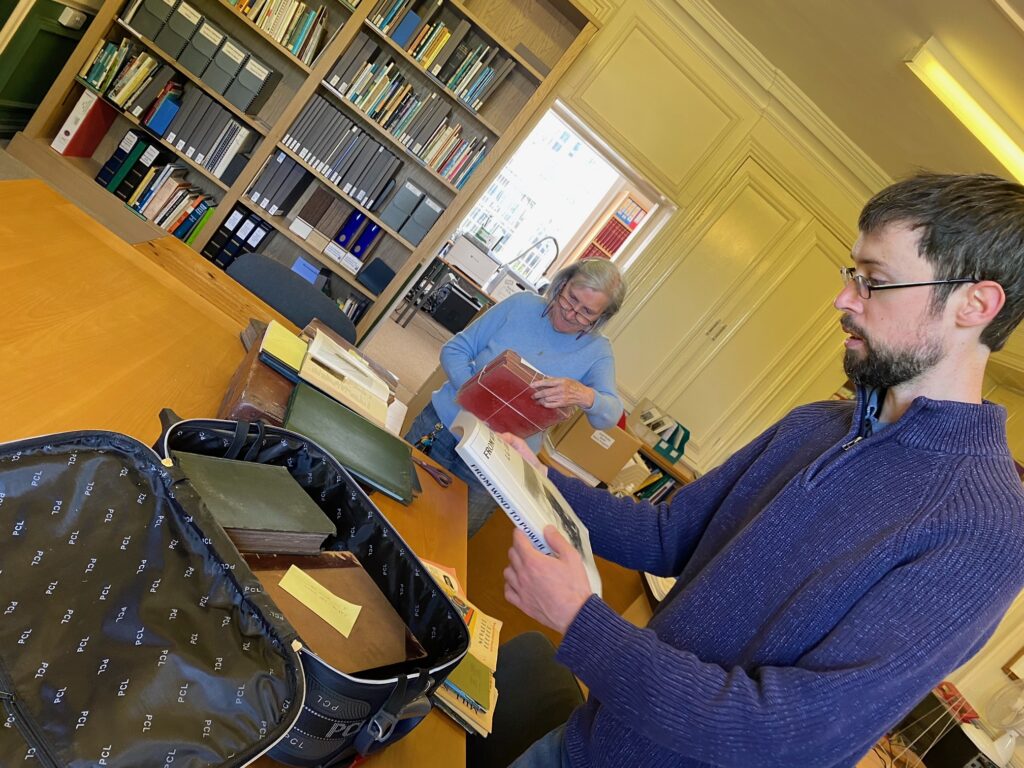

| Robert Allan Forrest began his milling training with the Soundy family at Abbey Mills, Reading, in 1948 after leaving the RAF. He later worked at Chaston’s Mill, Great Shelford, Cambridgeshire; Ponder’s End Mill, Enfield and Knottingley, Yorkshire, before getting his first job as mill manager at Paine’s Flour Mill, St Neots, where he remained for 12 years from 1953-1964. In 1959 he took part in a visit to Canada by a party of young millers, on the invitation of the Canadian Wheat Board. Leighton Morton, father of Robert Morton was another attendee. |
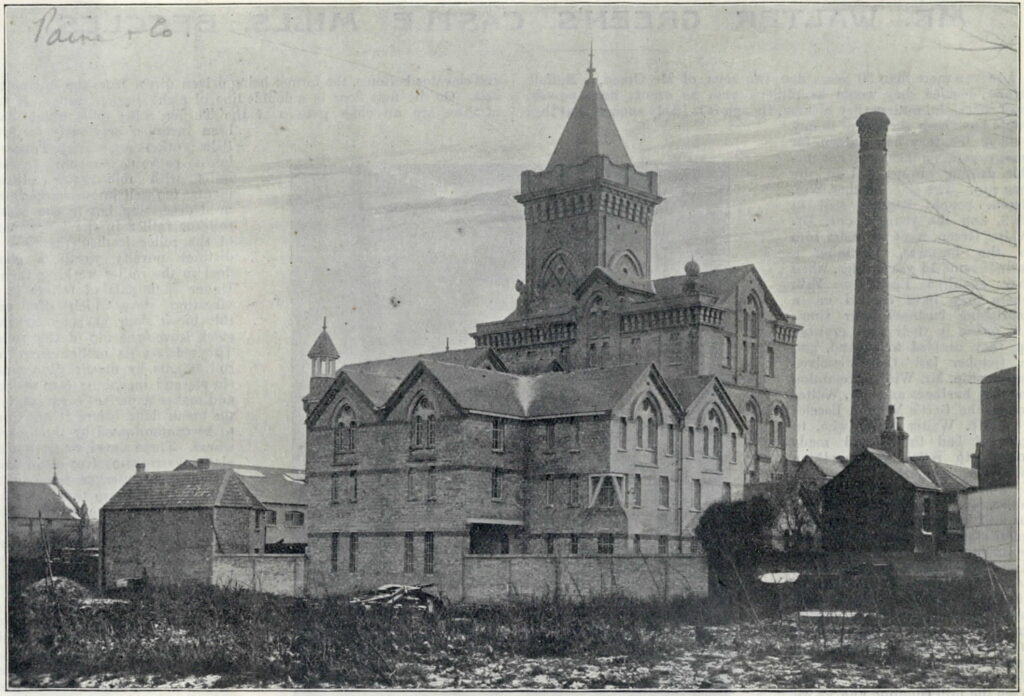
| Robert Forrest later worked at Timm’s flour mill, Goole for nine years, before starting his own small mill known as Cobbett’s Mill, and then becoming custodian of Houghton Watermill, Cambridgeshire, for the National Trust. In 1995 he was given an MBE for services to flour milling. We would like to thank both the Morton and Forrest families for their donations. If you have a history in the flour milling industry and have books or documents you would like to donate, or memories you would like to share, we would love to hear from you. Just send an email to archivist@millsarchive.org. |